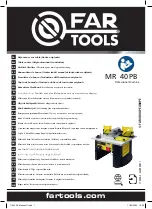
7.5 Configuring RSTP Protection Functions
This section describes how to configure RSTP protection functions. You can configure one or
more functions.
7.5.1 Establishing the Configuration Task
Before configuring RSTP protection functions, familiarize yourself with the applicable
environment, complete the pre-configuration tasks, and obtain the required data. This will help
you complete the configuration task quickly and accurately.
Applicable Environment
RSTP provides the protection functions listed in
Table 7-7
RSTP Protection Function
Protection
Function
Scenario
Configuration Impact
BPDU
protection
An edge port changes into a
non-edge port after
receiving a BPDU, which
triggers spanning tree
recalculation. If an attacker
keeps sending pseudo
BPDUs to a switching
device, network flapping
occurs.
After BPDU protection is enabled, the
switching device shuts down the edge port if
the edge port receives an RST BPDU. Then
the device notifies the NMS of the shutdown
event. The attributes of the edge port are not
changed.
TC protection Generally, after receiving
TC BPDUs (packets for
advertising network
topology changes), a
switching device needs to
delete MAC entries and ARP
entries. Frequent deletions
exhaust CPU resources.
TC protection is used to suppress TC BPDUs.
You can configure the number of times a
switching device processes TC BPDUs
within a given time period. If the number of
TC BPDUs that the switching device receives
within a given time exceeds the specified
threshold, the switching device processes
only the specified number of TC BPDUs.
After the specified time period expires, the
device processes the excess TC BPDUs for
once. This function prevents the switching
device from frequently deleting MAC entries
and ARP entries, saving CPU resources.
Huawei AR3200 Series Enterprise Routers
Configuration Guide - LAN
7 STP/RSTP Configuration
Issue 02 (2012-03-30)
Huawei Proprietary and Confidential
Copyright © Huawei Technologies Co., Ltd.
202
















































